Boxer Bite Work
Training a Boxer Dog for Bite Work
Meet Tamás Majoros ...
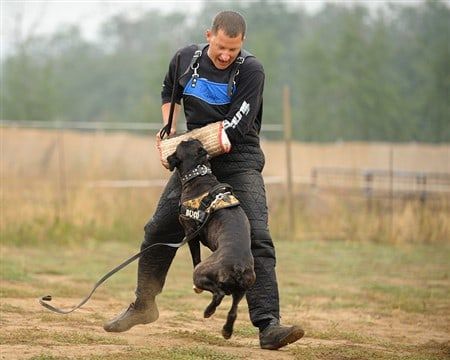
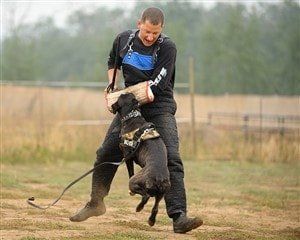
Tamás is a professional canine trainer, living in the 17th district of Budapest, called Rákosmente.
Tamás is employed by the network of the Tükör módszer-Mirror Method School. The Mirror Method philosophy is that dogs, like a mirror, show what type of owners people are. And a high emphasis is placed on keeping dogs balanced through activity, reinforcing good behaviors and establishing respect.
Since he was a child, Tamás has always loved dogs and has been working as a trainer for just about 8 years. He trains all sorts of breeds; yet, his household discloses a lot about his preferred breed; he has several Boxers back at home, both those that are there permanently and those that are guests.
Tamás and his wife are active members of the Boxer rescue team of the NOE Animal Shelter Foundation. The Boxers that he fosters stay with him until a new, responsible, devoted and suitable new owner is found for them. No doubt, the Boxers are in a loving home with Tamás Majoros, his wife, and their little toddler son.
You may recognize Tamás from some photos showing him doing bite training
with four special Boxers that do IPO training
in our profile of Karoly Tihanyi. There was such amazing reception to those, that we've answered the call to show you more awesome Boxer dog training pics, along with learning about Tamás' training method, thoughts about the process and the Boxer breed in this regard.
Intro to Training a Boxer Dog for Bite Work
Tamás was kind enough to write an article for us, to explain his training methods (in which he has a unique approach) as well as supply some really cool photos. And Karoly Tihanyi, a great friend of ABI indeed, was kind enough to translate Tamás's work, since it was written in Hungarian. A huge
thanks to both of them!
Drive (instinct) Control Training
Drive Control Training (DCT) differs basically from traditional guard/protection training, because the emphasis is on the drain of overflowing drive energy, controllability, and elimination of a dog’s frustration.
The first level is THERAPY. Due to urban surroundings and lifestyle, many dogs are frustrated and insecure. The DCT trainer generates situations in which the dog is allowed to come out of it as a winner.
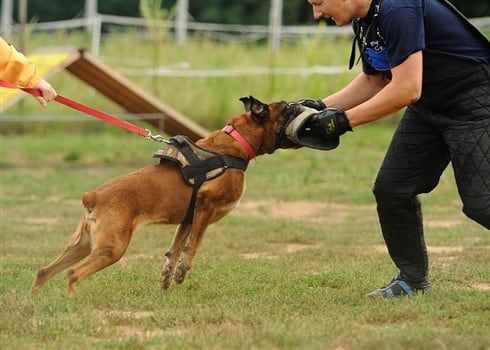
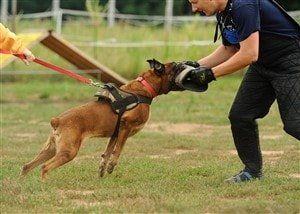
In this way, self-confidence and security feelings are strengthened, which has a beneficial effect for everyday life. Therefore, not only work dogs but any dogs may be trained with DCT. When a layman visits protection/guarding training classes, he may be greatly surprised because what he sees is far from his preconceived ideas and expectations.
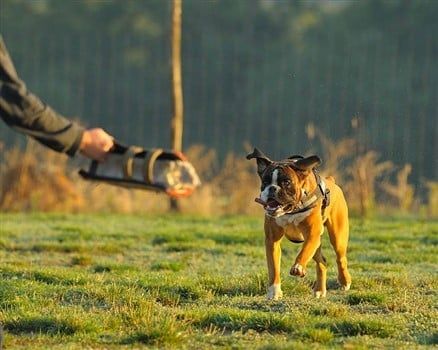
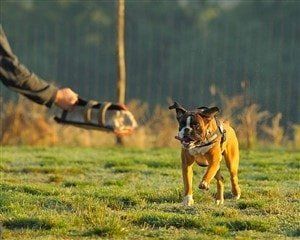
CONTROLLABILITY; DCT
is a perfect opportunity for the dog letting his drive and instinct freely flow and drain; and what’s more is that a Boxer can have this done this together with his owner. In fact, owner control must be at its maximum, since this is one of the major goals in DCT.
Drive control is an excellent tool in the hand of the owner for dominant, hard to handle dogs. A DC Trainer works together with the owner, and they gradually increase stimuli for the dog.


Controllability of dogs under high drive is rather challenging; let me mention the example of calling back your dog when chasing a cat or a rabbit.
The most valuable and most practical aspect of DCT is that the self-confidence of the owner is growing in parallel with the controllability of his dog, while practicing protection bite/guard/ work.
In DCT classes for bite training,
two basic drives are predominant: drive for the prey and drive/instinct of protection. These drives are present in all dogs but their strength varies greatly.
The drive for prey
is a primordial hunting drive; usually small, quickly moving animals or other objects turn it on. This drive is present in all dogs, though breeding partly eliminated it in some breeds. We call a dog a ‘preyer’ if he or she reveals high attention for a ball or a toy, and later for the protection arm.
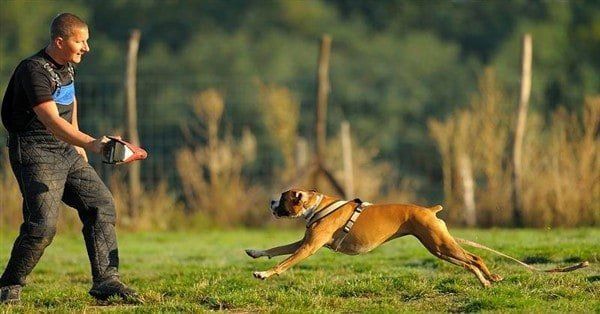
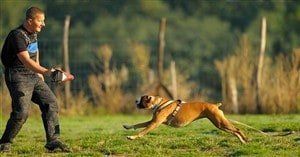
Obvious signs of high drive for prey are sneaking up on the prey, chasing it, grabbing it and possessing it. These properties are visible early in puppies and they can be developed. A strong drive for prey is an advantage; however, later it may become a problem, when the owner must stop his dog.
It is possible to achieve a spectacular guarding/protecting performance with a ‘preyer’ dog, where the dog works in such a situation only for the prey which he strives for.
The real guarding/protecting work requires the protection drive, too. The two drives together provide the maximal instinct discharge for the dog.
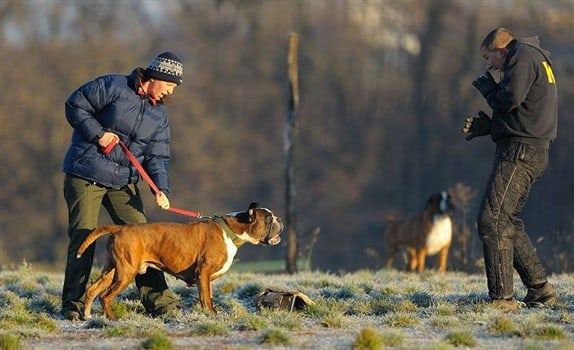
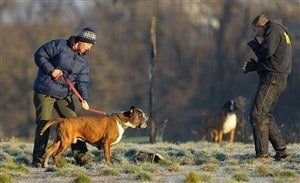
The simplest expression of protection drive
is when a dog protects his own life. He also can protect the prey, his domain, his puppies or the female. Aggression is also a form of protection drive and so is to evade it, when a dog is scared and escapes or avoids a fight.
It is up to an individual character, that the prey drive or protection drive dominates in a dog. Both drives need to develop in a parallel way.

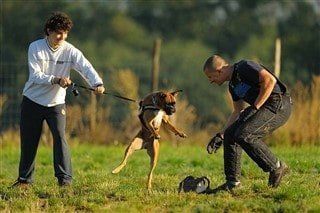
When we see an advanced level protection demo, we may think that the escaping helper person is taken as prey by the dog and the person is caught as a prey by the dog. Actually, the protection arm is the prey for the dog for which he must fight with the resisting helper; he wants only the arm pad taken away from the person.
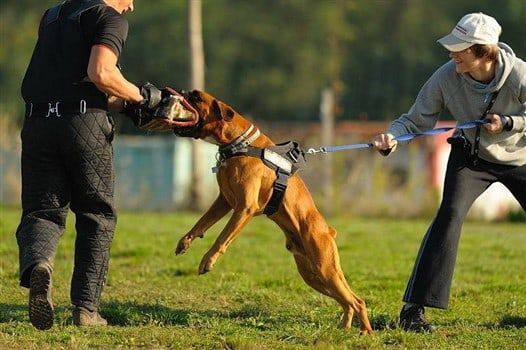
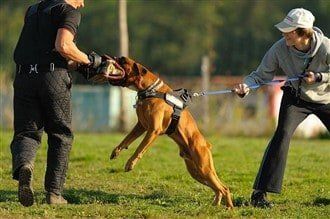
From the aspect of dog, the prey/protection training offers him confidence, balanced behavior, and an intense discharge of ancient instincts and drives. A 10-15 minute intense training revives primordial instincts and feelings, which otherwise, in the civilized, urban way of living is not possible.
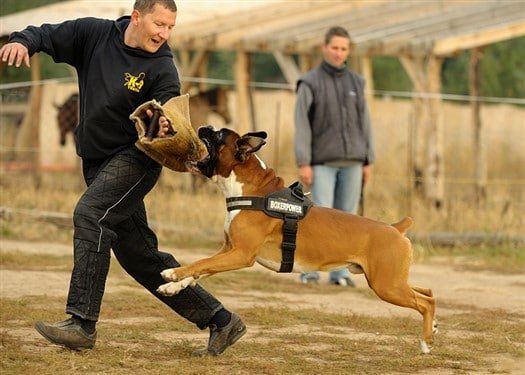
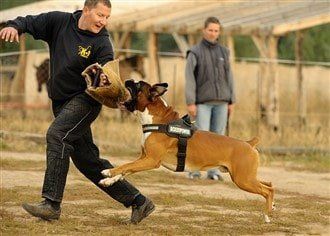
Dogs differ greatly in their aptitude; the trainer must know the dog and he must consult with the owner, especially if the roots of a behavior need to be deciphered. The protection training should be built up step by step, addressing the special needs of an individual.
Boxers have excellent drives for prey and protection, often their drive for prey is extremely high. They have a sturdy nervous system, healthy psyche, and it is hardly possible to spoil a Boxer. They never become sly or insidious. Their physical build is robust, athletic and their attitude is vehement and passionate. Besides, they are truly benevolent dogs.
The disadvantage of Boxers in protection work is that intense activity can make them wheeze sooner than other, slimmer breeds. The wheeze maybe due to their special nose/throat anatomy, as well.
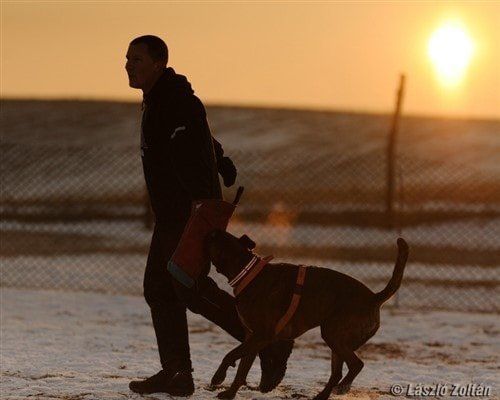
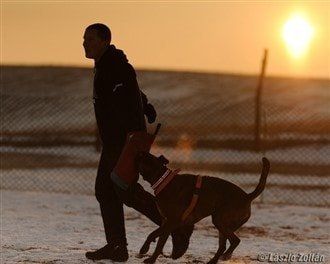
A huge thanks to Tamás for giving us a glimpse into his world. What he does and the Boxers that he works with is truly impressive. And again, a big thank you to Karoly Tihanyi, for his time and effort in translating this piece for us. You guys are awesome! Here's a few more really cool photos of Tamás at work.

Slide Title
Button
Slide Title
Button
Slide Title
Button
Slide Title
Button
Slide Title
Button
Slide Title
Button
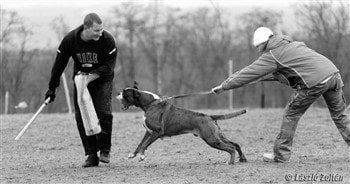
Slide Title
Button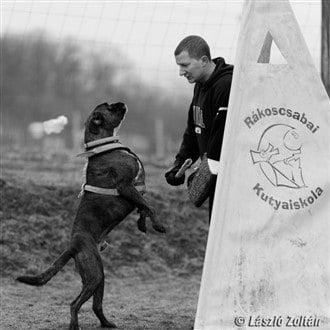
Slide Title
Button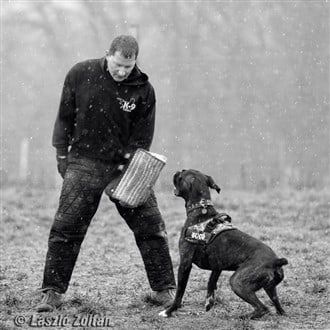
Slide Title
Button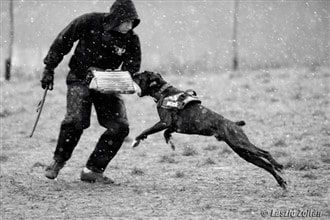
Slide Title
Button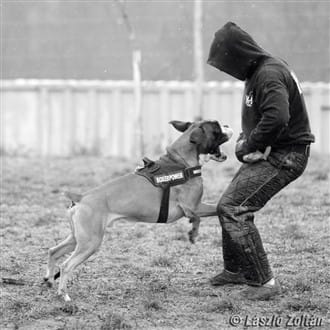
Slide Title
Button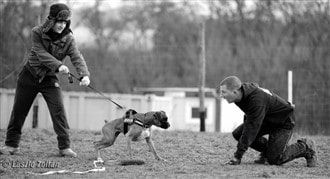
Slide Title
Button
Did you catch these articles?
The Boxer Dog VS Other Breeds
- A fun and interesting look at how the Boxer stacks up and how he fits in, in comparison to other breeds. We look at size, traits, appearance, intelligence, groupings and much more.
Boxer Dog Gas and Flatulence
- Find out how much gas is normal and how to treat excessive gas before it develops into a real problem.
Boxer Dog Senior Care
- This article discusses changes to prepare for and how to offer an older Boxer the best of care for quality senior years.
My Boxer Won't Listen to Me
- Why a Boxer may be a bit stubborn and not listen to their owner. And great tips for teaching proper hierarchy.
How Smart is a Boxer Dog
- An interesting article regarding Boxer breed intelligence, both compared to humans and to other dogs.
Boxer Dog First Aid Kits
- What you really don't need at all, and which things are actually a good idea to have on hand.
AllBoxerInfo.com All content is protected by US and International copyright laws. All rights reserved.
We are a participant in the Amazon Services LLC
Associates Program, an affiliate advertising program designed to provide a means for us to earn fees by linking to Amazon.com and affiliated sites.
